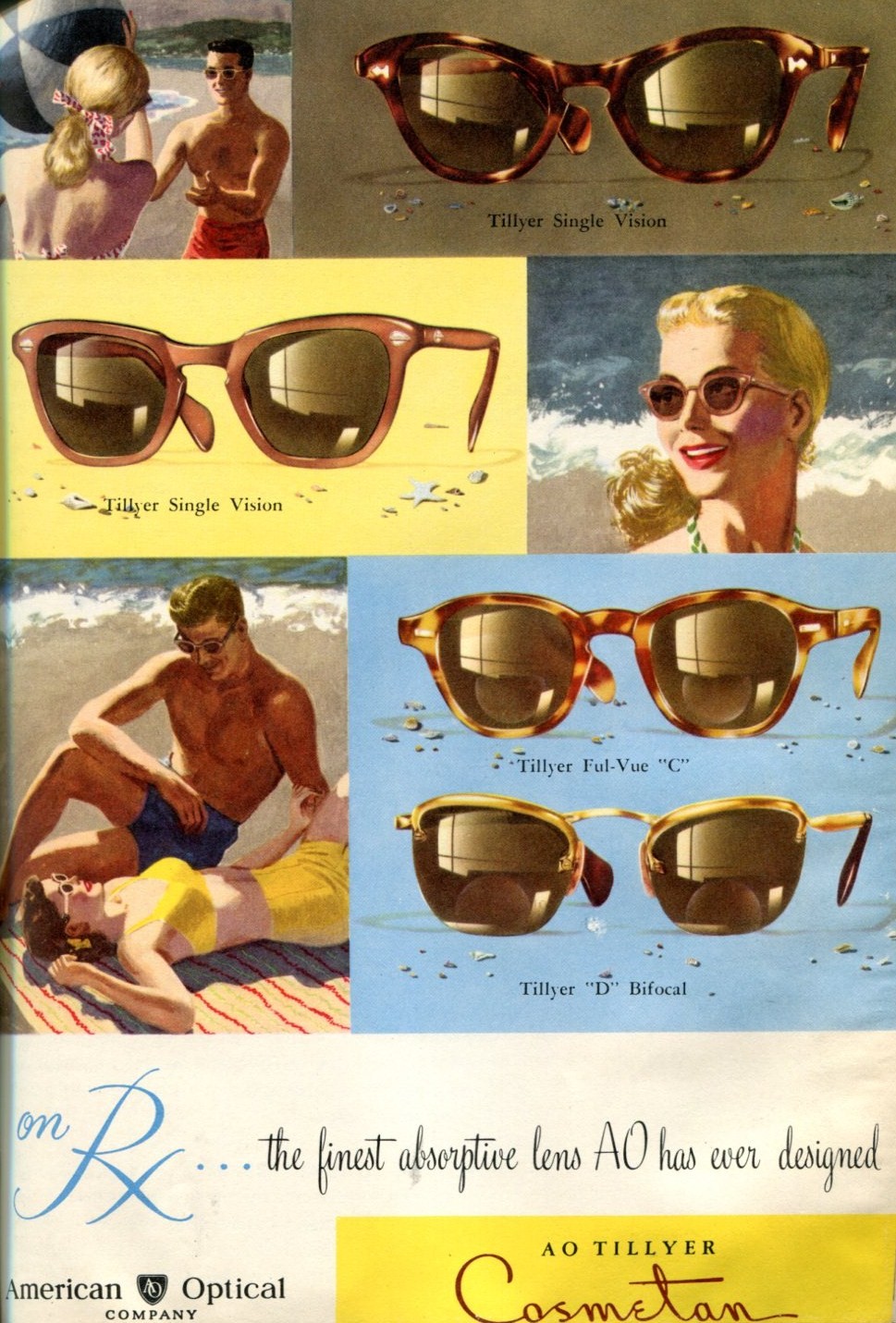
Sunglasses
Keeping cool while the weather heats up
From Aviators to Astronauts: Sunglasses - for People Who Live Dangerously
When you think of aviator sunglasses, maybe you think of Tom Cruise, who wore them in the movie Top Gun. Or, depending on your age and tastes, you might associate them with Hugh Jackman in X-Men, Al Pacino in Scarface or Sarah Jessica Parker in Sex and the City.
By Ted Gioia.
But the real aviator sunglasses, like many fashionable eyewear designs, started out as occupational aids. Real aviators wore them, just as later breakthroughs in sunglass technology were first developed for motorists, outdoor enthusiasts, and even astronauts.
The history of eyewear for people who live dangerously is now on display at the Optical Heritage Museum in Southbridge, Massachusetts. These artifacts, some of them unseen for a century or more, come from the archives of American Optical, now part of ZEISS. The display showcases not only how far lens technology has advanced, but the practical beginnings from which such a popular fashion icon once began.
In 1913, American Optical set out to make the perfect pair of glasses for flying. They drew on the company’s deep in-house expertise in optics, and also secured rights to a breakthrough lens technology developed by the famous British chemist Sir William Crookes, which blocked ultraviolet rays with minimal interference of the visible color spectrum. Crookes had experimented with more than 300 color variations, drawing on various metals and oxides, over a period of four years before choosing the optimal formula.
Aviators had special eye protection needs back then, and faced far more risks than modern pilots. Airplanes were open-air vehicles with wind, mist and debris a constant risk. That’s why those aviator sunglasses have such big lenses—for added protection! But motorists faced similar problems, as did sports enthusiasts and others who led active outdoor lives.
More than a century ago, American Optical began developing specialized eyewear for different activities and professions. Nowadays eyecare practitioners call this lifestyle dispensing. The word ‘lifestyle’ didn’t exist in the English language at that time, but the concept was latent in these task-specific sunglasses.
Then, beginning in the 1920’s, sunwear received a dosage of glamour. During this decade Hollywood movie stars were often photographed wearing sunglasses as they were consistently exposed to bright studio lighting. Actors would suffer from sore eyes while on set and took to wearing sunglasses to rest their eyes while off camera and even outside the studio. Although sunwear still needed to protect eyes, style and fashion had suddenly become just as important to consumers. From this moment on, celebrities spurred new trends and people would seek out sunglasses that matched what they saw on Marilyn Monroe, John Lennon, Jackie Kennedy and other famous people in the public eye.
Even so, sunglasses remained a high-tech product. The advent of new technologies, from polarization to innovative lens treatments, ensured that each generation of wearers had higher performance eyewear than their parents and grandparents and continued to evolve with advances in physics, chemistry and computer design software.
The Apollo lunar program of the 1960s demonstrated that astronauts needed cutting-edge sunwear, just as pilots and motorists had in previous decades. Again, American Optical took on the responsibility for providing sunglasses for people with the most dangerous jobs.
"Will Not Fog." Here is what the actual US Army Aviators were wearing in the 1920's
A century ago, American Optical had already pioneered the concept of lifestyle eyewear
During the Apollo mission, the company’s sunglasses were worn by Neil Armstrong, Buzz Aldrin, Jim Lovell and other astronauts. NASA even added a specially-designed pocket in the spacesuit to hold the specs. The pair Armstrong brought to the moon on the Apollo 11 trip is now on display in the Smithsonian Institute.
Others benefited from these advances. The sunglasses that went to the moon were also issued by the military to pilots and other personnel. Polarized lenses and UV treatments are now widely used by consumers.
“Sunwear is still a high tech field today,” remarks ZEISS Vice President Karen Roberts. “We still have all the options that pilots and astronauts relied on back then. But we also have new lens treatments to enhance comfort and optimize vision as well as ultra-tough materials and coatings, designs to give high-definition clarity, and tints that add to both appearance and performance.
“We’ve come a long way since actual aviators wore those first aviator glasses,” she adds. “Fortunately you don’t need to live dangerously anymore to get the benefits.”
You might also like…
Optical and the Moon
AO eyewear journeys to space
UV
How professionals “saw the light”



